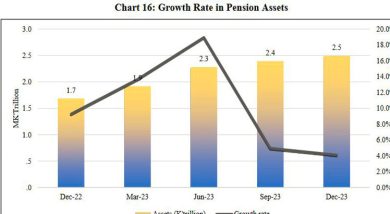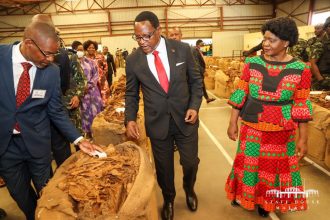Kapichira II Power Plant to spur business growth
 The completion of Kapichira II Hydro Power Plant this year will enable Escom to supply between 10 to 12 megawatts (MW) of power to Paladin’s Kayelekera Mine in Karonga.
The completion of Kapichira II Hydro Power Plant this year will enable Escom to supply between 10 to 12 megawatts (MW) of power to Paladin’s Kayelekera Mine in Karonga.
PAL general manager for international affairs Greg Walker told Nation Online that the mine requires this amount of power and hope that the Electricity Supply Corporation of Malawi (Escom) will be in a position to supply that amount when the Kapichira Hydroelectric Power Station is completed.
The power plant is expected to add 64MW to the Escom power grid.
Malawi continues to face the chronic problem of erratic power supply with the sole power supply’s generating capacity of 283 MW while suppressed demand for electricity is more than 350 MW.
This power deficit impacts negatively on industrial output. It raises the cost of doing business by forcing companies to buy stand-by generators; hence, helping to increase the demand for diesel.
At the household level, this has affected consumers’ way of life.
In view of this, government decided to use $55 million (K19 billion, at the current exchange rate) from the 2011/12 national budget to construct Kapichira II Hydro Electric Plant by engaging a Chinese contractor, Gezhouba Group Corporation.
Under the project, two new generators are being installed to produce an additional 64 megawatts of power each to be added onto the national grid. This will, in a way, help the country meet its demand of electricity by up to 90 percent.
Escom says installation of the first generator of 64 megawatts will be completed in August while the second should be on the line by November, adding 128 megawatts of electricity to the national grid by the end of the year.
That will add to the combined production capacity of Nkula, Tedzani, Kapichira One and Wovwe Hydro-electric Power stations of about 285 megawatts, according to Escom.
But Walker said PAL will be very pleased to source hydroelectric power from within Malawi instead of having to generate its own power from diesel-driven generators.
“This will reduce diesel consumption, save foreign exchange and reduce the carbon footprint [emissions] of the Kayelekera Mine. The upgrade to the Escom distribution network required to bring power from Kapachira Power Station to Kayelekera Mine will pass through Karonga, which means that the reliability of Karonga’s power supply will also improve. This is another spin-off benefit to the people of Karonga from the Kayelekera Mine,” he said.
Officials of PAL and Escom have been meeting on a regular basis over the past few months to plan this project, according to Walker, with the latest meeting held at Escom’s head office in Blantyre last Monday.
Last Wednesday, Minister of Energy Ibrahim Matola toured the project to assess the progress of the work.
“Government recognises the rise in demand of energy needs and it is exploring various ways of meeting the needs of consumers,” he said after the tour.
Matola noted that apart from new power station, the government is also pursuing other initiatives that include the interconnector project with Mozambique’s Cabora Bassa Hydro-Electric Power Station, the establishment of a coal–fed power generation which uses coal, oil or gas to produce electricity, geothermal electricity generation which uses flash steam and power plants and solar power generation which uses sunlight.
Matola said the increase in access to electricity will help mitigate effects of climate change which have arisen due to environmental damage.
Kapichira phase II has taken 10 years since the commissioning of phase 1 in 2000 and Escom chief executive officer John Kandulu was quoted as saying that once the two [Kapichira] generators are commissioned, the problems of load shedding will be stabilised.
As a beneficiary of Kapichira II, PAL will be saving $20 million a year on fuel, about 10 percent of mine’s costs.
The miner uses 1.5 million litres of diesel, an equivalent of K783 million (about $2.3 million).
Unreliable power has, for a long time, been a thorn in the flesh of individuals and businesses heavily affecting production purposes.
Mining activities which have of late taken centre stage in Malawi require reliable power supply because they use huge machines.
Some two or so years ago, Eland Coal Mining Company, a subsidiary of Heavy Mineral Limited (HML), rolled out plans to invest $300 million in the setting up a 300 megawatts coal power plant to cater for its coal mining activities at Mwabulambo in Karonga.
The plans were, however, put on hold.
HML are also the owners of Allied Procurement Agency, operators of the Chipoka Sands Project in Salima, whose production also stalled because of insufficient power from Escom.
The Malawi Confederation of Chambers of Commerce and Industry (MCCCI) business climate surveys have faulted unreliable power supply as one of the obstacle to doing business in Malawi.





